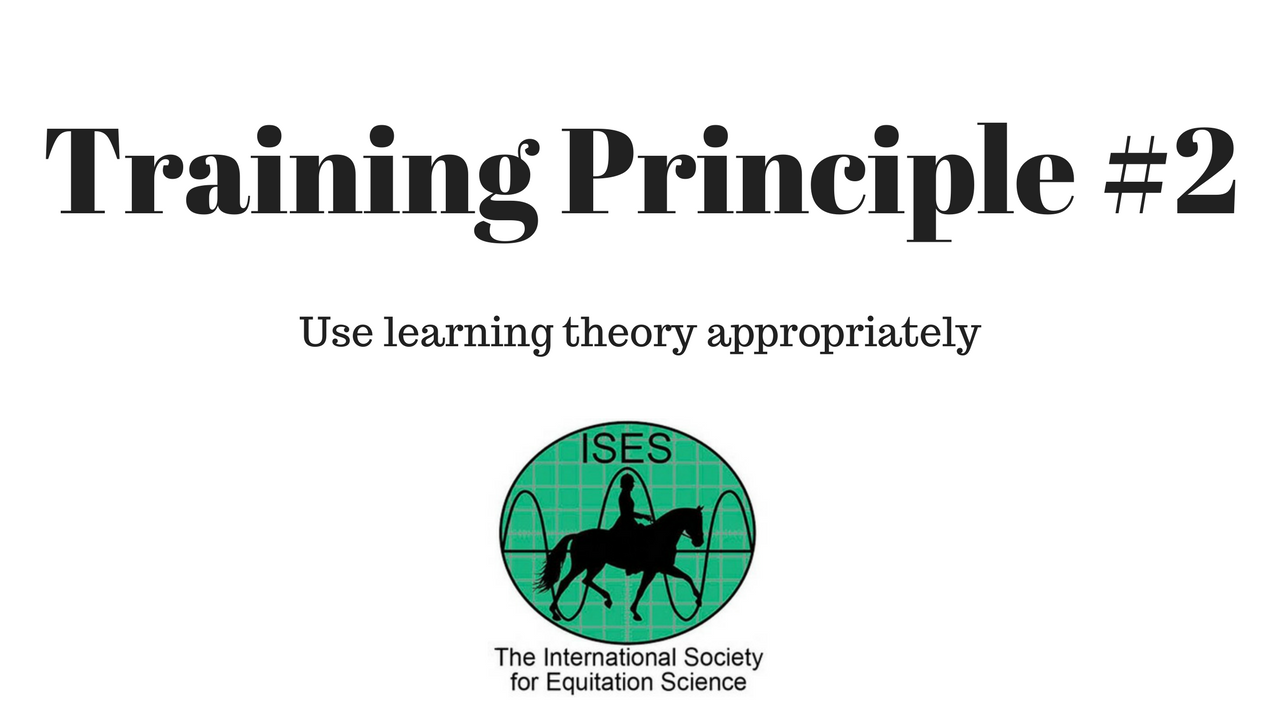
The International Society for Equitation Science Training Principle 2 states to 'Use learning theory appropriately'. Again, as with Principle #1, this is a large topic.
The main learning processes for horses are:
- Habituation - becoming accustomed to things
- Sensitisation - increasing the response to light cues
- Shaping - rewarding and building on a small proportion of the desired behaviour
- Operant conditioning - positive and negative reinforcement and punishment
- Classical conditioning - making associations between two stimuli (Pavlov's dog)
Learning theory tells us to systematically habituate or desensitize a horse to new things, the saddle being a great example. To do this we need to introduce the saddle slowly, breaking the lesson down for the horse by using a rope girth first, then perhaps a surcingle and finally a saddle. Breaking it down in this way is an example of shaping. The horse is rewarded for remaining relaxed with the rope girth before being introduced to the next stage, the surcingle. This is an example of operant conditioning, the horse is rewarded and praised for remaining calm when saddled.
The same first saddling lesson, not following learning theory, could involve flooding. Here the saddle is put on the horse with no desensitisation or habituation and the horse is left to 'buck it out'. This is a very risky process for the horse and the handler. Even in the safest of round pens, a horse can kick at the fence and possibly get a leg through. I've had horses come to me after tearing topline muscles during this flooding process and others that have simply never recovered, emotionally, from this type of traumatising first saddling event.
Sadly, even today, flooding is a fairly common practice in horse training. Can you think of an example where you've seen it being used? If so, leave me a comment below and tell me about it.
If you'd like this series delivered directly to your inbox, click here.

